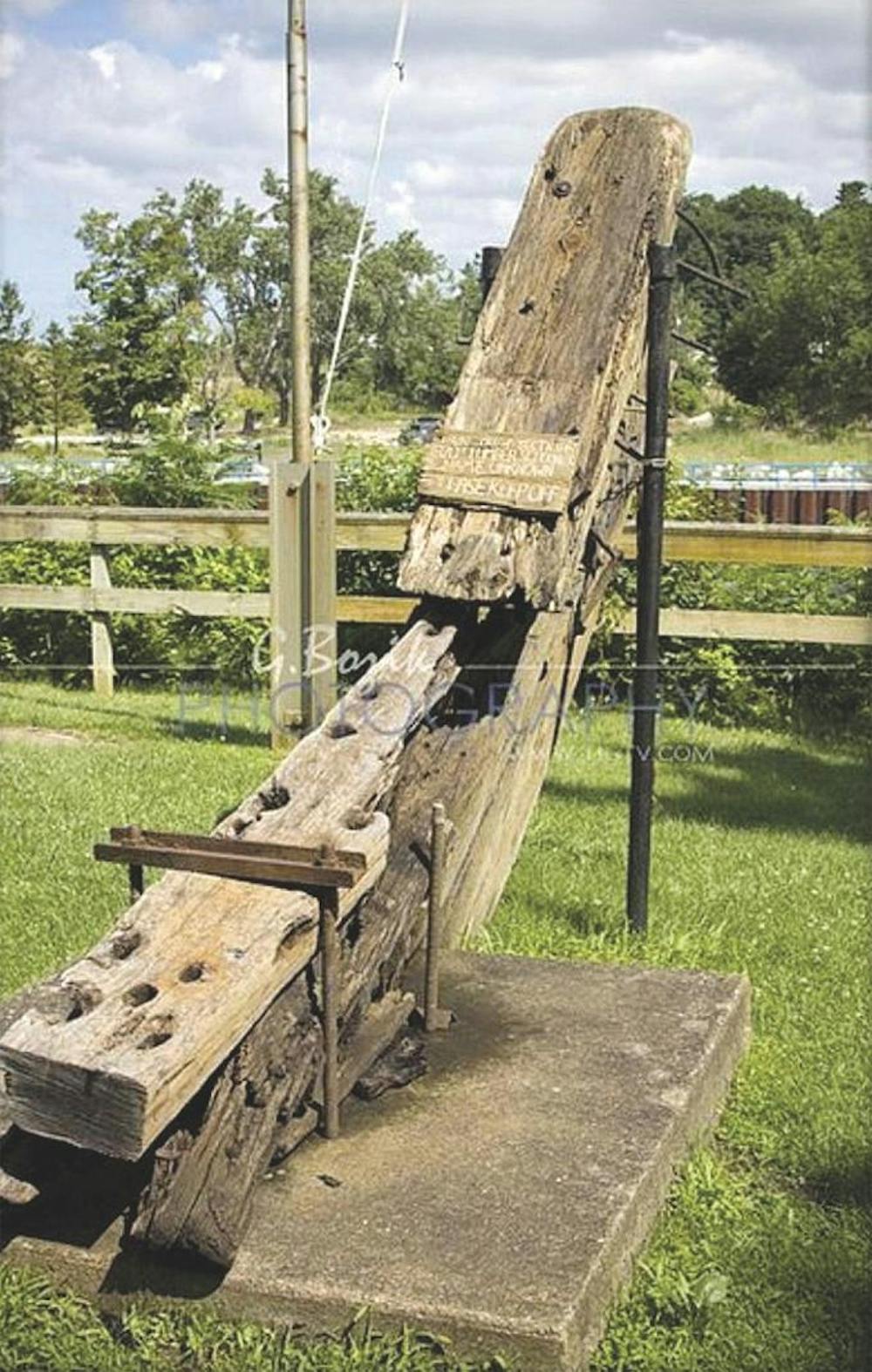Anyone who has visited the White River Light Station on the Whitehall side of the White Lake Channel has probably seen this piece of ship wreckage located on the lawn. You may wonder what it is and how it got there.
In the White Laker Observer for Wednesday, July 13, 1977, an article written by Esther Jamieson appeared regarding a piece of shipwreck that was donated to the White River Light Station. With its discovery, it left many unanswered questions like: Who built the schooner? When? Where was she bound for? How many hands were lost, if any? Only God, and maybe Davy Jones, know the answers.
The stem of an unknown ship was discovered in October 1976 in Lake Michigan at Little Point Sable near Shelby. E. F. Porter of Okemos and 13 others assisted in the recovery effort.
The salvaged portion may have been part of a wrecked schooner. The stem of heavy oak, 12 feet long, has Roman numerals V and VI, which could be plimsoll markings. For the land-lover, the plimsoll line is a reference mark located on a ship’s hull that indicates the maximum depth to which the vessel may be safely immersed when loaded with cargo. This depth varies with a ship’s dimensions, type of cargo, time of year, and the water densities encountered in port and at sea. There were heavy marine spikes and one heavy chain in perfect condition.
The wreckage was offered first to the State Historical Society, then to the Dawson Museum of Detroit. Since neither museum could use the remains, a report of the salvage was written in “Telescope,” a marine magazine.
It was in this publication that Richard Gebhart, then curator of the White River Museum, learned of the retrieved shipwreck which was available.
In fall 1976, Richard Hain and Vern Donley of the Fruitland Township Park Commission, using a tractor, forklift and truck, moved the heavy wreckage to the museum grounds. A concrete base was prepared for the precious marine memorial.
James Duncan, then chairman of the township’s Park Commission, invited the public to inspect the tangible bit of history located on the lighthouse grounds.
In the last 47 years since the wreckage was found, the elements of wind, rain, ice and snow have not been kind to the stem, which has deteriorated greatly. There may come a time when there isn’t anything left of it. That’s why it’s sometimes better to just leave the remains where they were found.











